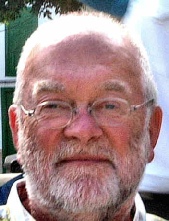
10 december 2020


All original writing

2014, 2015, 2016,
2017, 2018, 2019,
2020, 2021, 2022,
2023, 2024
Dr Ian McLauchlin


WORKED FOR ME
It seems such a long time ago and memories, along with other bodily functions, are fading fast! But while I can still remember, here are some highlights from my working life.
Nuclear Power. Always been fascinated. When I first came for interview I walked down the road from the bus stop, partly to check out the surroundings and get a bit of fresh air, but also because I didn't then realise that I could have asked for transport! It was raining and I had to buy an umbrella from M&S when I changed trains. Although I've forgotten, my wife tells me that I was only just able to leave that establishment after my interview due to sudden flooding. Others weren't so lucky!
As I didn't yet live in the area I stayed temporarily at a guest house and travelled home to Nottingham at weekends.
On my first proper day at work, my new boss met me at the gate with a hug and a bunch of flowers. No that can't be right. Maybe he just said "We want you to tell us all about the high temperature creep behaviour of 20/25/Nb AGR cladding material, so that we can calculate how long AGR fuel elements will remain intact in the reactor." Yes, that was it.
I shared an office. Because of the adjacent Shielded Area where spent nuclear fuel was sectioned, examined and tested, the whole building was seriously air conditioned and none of the windows opened, which was a pity considering the excellent location by the river. On a good day you could watch gulls floating down stream on the warm cooling water from the adjacent power station. When the water got too cool for them they'd fly back up to the outlet and the cycle would repeat!
I set about work on understanding the primary and secondary creep behaviour of that particular steel and the effect of long ageing treatments in the reactor on precipitate structure and hence mechanical properties.
I was one of the first users of the new High Voltage Transmission Electron Microscope, just purchased from Japan -
My first Technical Assessment Panel took place at another establishment at the other end of the country, only a year after my recruitment. These were periodic and severely searching technical interviews aimed at finding out what you'd achieved, what you understood, where you were going and whether you were worth more than they were paying you. Or less . . . . I travelled with a colleague who was somewhat mortified that I was wearing a PINK shirt! To an assessment panel! (This WAS the end of the 1960s by the way.) The pink shirt evidently worked its magic and I got an immediate promotion and pay rise.
During my early forays into the metallography suite I got to know the lady in charge, who must have wondered what was going on under the breath of this new recruit. She could probably hear words like "why don't we do it in the road". What actually was going on was that I was singing, in my head, songs from the latest Beatles Album -
The high temperature creep work expanded and included other stainless steels and various environmental effects such as surface contamination by zinc (as a result of the Flixborough Plant disaster) and effects of carbide precipitation and carburisation.
In an idle moment my new boss (bosses changed frequently) thought it might be a good idea for me to look at the effects of diffusion creep on the integrity of bolted joints in Magnox reactors. There was a group then involved in studying diffusion creep and it would be worth examining whether bolt integrity calculations should consider this deformation mechanism. It turned out that there was no need. I was clearly at home working on the effects of mechanical properties on component integrity and that's how I came to work more and more on the effects of deformation caused by interfacial growth of oxide on the life of steel components and structures in reactor coolant circuits.
At some stage I moved office, first to a different part of the same building and later to a newly built block, while being responsible for a Creep Testing Laboratory in another part of the site. Integrity calculations needed low stress, long term, medium temperature creep data for steels, not otherwise available in the literature. Looking back, all of my office moves were to improved accommodation, which is much better than the converse!
In our lunch hour, myself and colleagues would often walk down the river bank and back. This was a fortunate benefit of working where we did -
In the case of bolted joints, my analysis of the mechanical response of such fastenings to strain by oxide growth in reactor environments led to my writing a computer program to solve complex equations and thus to characterise the partitioning of strain in joint components, taking account of the high temperature mechanical properties of the various materials in the joint. This program was used nationally as part of the Nuclear Safety Assessment Methodology for determining the continued integrity of components in the coolant circuits of Gas Cooled Reactors. It became the basis for increasing the predicted life of high strength bolted joints. All of this work was assessed and approved, following extensive face-
I subsequently worked on related analyses and calculational methods for the integrity of welded and dowelled joints, chairing national committees on all of these topics. Extensions of this work took in the effects of temperature, primary creep strain, and effects of interfacial stress on oxide growth.
As part of my work on effects of environment on steel component behaviour in reactor coolant circuits, I developed a model for the creep of steel deforming in a carburising environment -
A range of other related work was undertaken from time to time, including effects of metal loss from boiler tubes due to corrosion and chemical cleaning, and analyses of the behaviour of various specific reactor components.
One day I turned up for work and found the car park unusually empty and the security staff at the gate smiled and nudged each other as I walked to my office. Turns out it was a Bank Holiday! If anyone's still in any doubt about the dedication and total devotion to the job (we continued thinking when we got home every night and many problems were solved during our sleep), just ponder on this admission!
Over the years I wrote well over 100 associated Technical Reports and was able to make a variety of Conference presentations and publish many papers in International Journals.
Towards the end of all of this work, privatisation of the industry caused large upheavals and a lot of scientific work was seen as unnecessary by those politicians who didn't, and couldn't, understand it, or the need for it. Seeing the writing on the wall, and grabbing the opportunity to increase my pensionable salary, I became Finance Officer for the Structural Engineering Branch. Eventually health problems surfaced and I was forced to retire. Following that, those charged with taking over became concerned about what they thought was the sparse content of my spreadsheets. I gained a lot of satisfaction from explaining that what they'd been looking at were Section Summaries. The spreadsheets were three dimensional and the tremendous detail was only accessible if you knew to look for that!
I now spend time caring, designing and constructing websites, annoying the rest of the family, wondering about the state of the world, doing strange things with LEDs, writing humorous articles and making up jokes (though some would disagree with that last description . . . . ). Did I enjoy it all? What do you think? (Correct answer below.)
Yes.
-
Other Miscellaneous Memories:
Pam, one of the well regarded telephonists and receptionists, was famous for telling the story of her husband taking many photographs on holiday using one of the new-
I was able to join the Sailing Club and each June visited many French and Channel Island Ports and, contrary to rumours that they closed the harbours when they saw us coming, sometimes more than once! Everyone has to show their passport when entering a foreign country, right? Wrong. I've entered France by yacht many times and often haven't been bothered by customs, border guards or anyone else for that matter.
I don't remember how this happened but I came to help write and perform the Christmas Lunch Cabaret. As is often the case for handwritten scripts, I don't have a copy of any of them. I didn't have a copy of the script of a pantomime I once helped to write until a friend recently declared that she had a copy and sent it to me! (The only copy of that pantomime script was once put in the hands of a typist by a 'helpful' collaborator who then refused to release it until money had changed hands. Lesson: don't ever part with the only copy of anything.)
Recently I heard from a colleague that he'd been recommended to look for a job at another Company Establishment as "we already have a creep expert here". That was me, though that's not what I thought inside my head!
A few of us got some strange etymological pleasure from the fact that one of the Branch Heads, Derek Dominey, had a Secretary called Roxy at exactly the same time as the Charts contained tracks by Derek and the Dominoes and Roxy Music!
Following Mrs Thatcher's conviction that she knew better than anyone else about everything, I was forced to attend a course on Teamwork given by a 15 year old management consultant in a suit ! Little did he know (actually and metaphorically) that the Oxidation/Mechanical Effects team, drawn from experts working throughout the various Industry Establishments was a team that had worked together for decades and was one of the most effective in the Company.
I once presented a paper at a Conference in Petten, The Netherlands, but had to suffer the embarrassment and indignity of being able to offer only a handwritten version at the time of the Conference. It couldn't be typed because the waiting list for typing was over a fortnight long and there didn't seem to be any means of prioritising. After the advent and availability of the Personal Computer, I never wrote anything by hand again. And the Typing Pool were surprised when their work load dried up . . .
My wife, who was a teacher at the local Comprehensive School, once came home with a worried expression. "We have to compile Skills Profiles for each pupil and the format is unworkably rigid !" Drawing on the programming skills I'd taught myself over the years, I said "Hang on a minute, you can computerise that." And that's how BTEC/City and Guilds came to invite me to give a presentation in Cambridge on Computerisation of their Skills Profiles. Other programmers attended too. But BTEC formatting requirements were definitely not designed to ease computerisation and everyone else couldn't solve the problems and so ignored some of the more difficult formatting stipulations. I didn't and managed to write a computer program that stuck rigidly to the rules. They bought my program and schools throughout the country bought it from them. It was heartening to have feedback from teachers saying things like "Thanks, you've saved my life etc." I should probably have charged more . . . .
